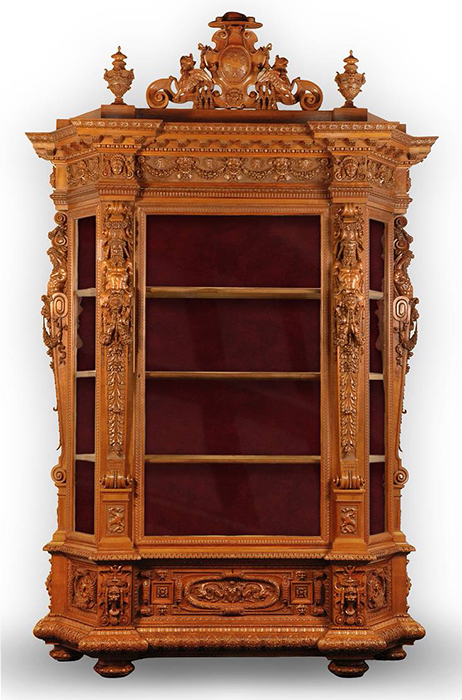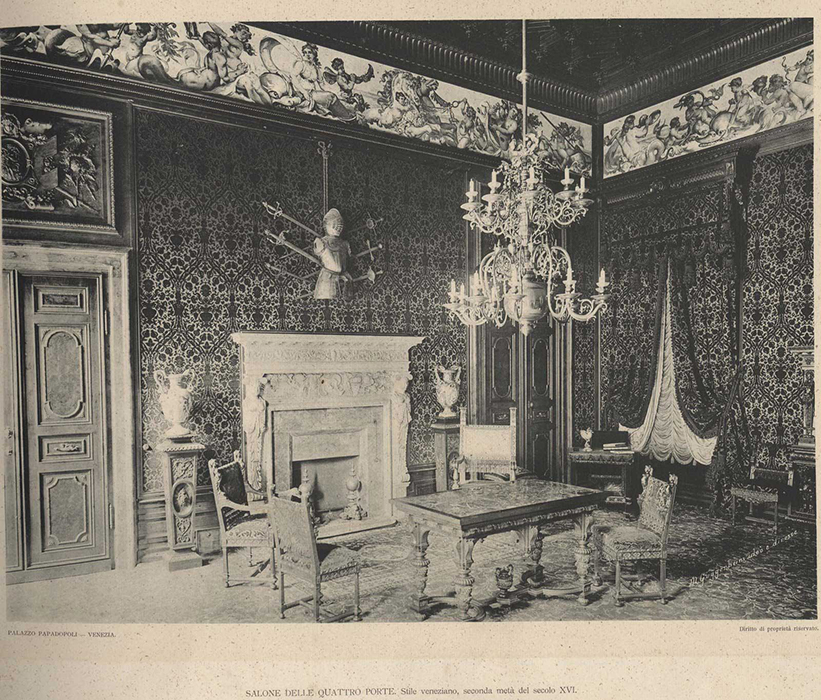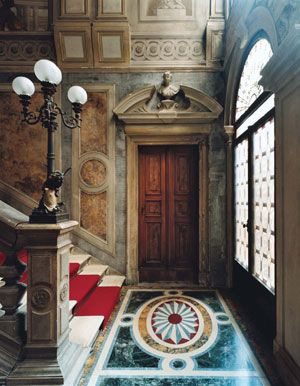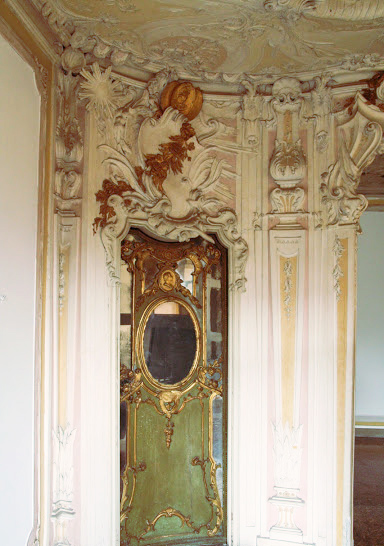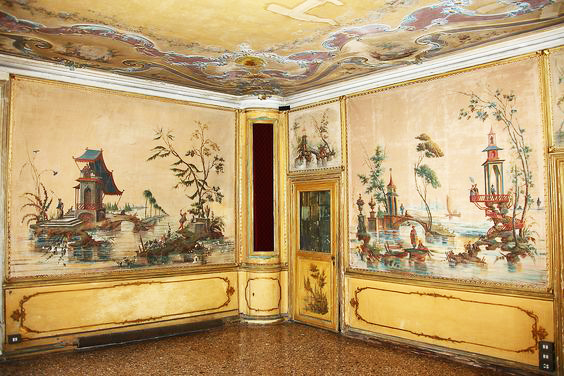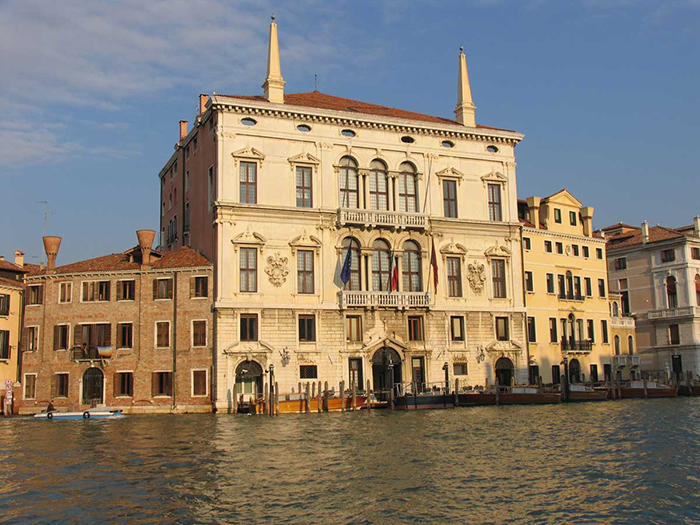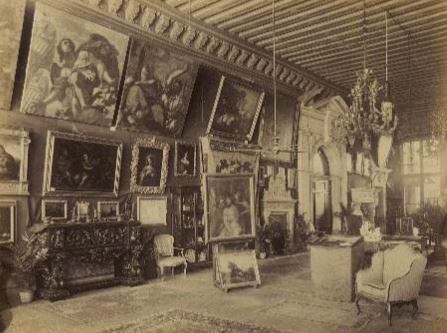Moses Michelangelo Guggenheim
Download PDFIn Venice at the end of the 19th century, Moses Michelangelo Guggenheim was a well-known figure: antiquarian, collector, maker of artistic furniture and active participant in the public life of the city. Present in committees of numerous exhibitions, he was named Academic of merit by the Royal Academy of Beaux-Arts, corresponding with the University of Venice, Commander of the Crown of Italy and Knight of the order of the saints Maurice and Lazare. He occupied a particularly important place as a protagonist of the debate on the reorganization of the Correr Museum, around the years 1880 -1890.
Moises Michelangelo Guggenheim was born in Venice the 17 November 1837. His father, Samuel Guggenheim, and his mother, Sara Dettelbach, natives of the Duchy of Baden, arrived in Venice during the 1820s. Very quickly, they dedicated themselves to the collection and selling of artwork, improving their knowledge of decorative arts, at a time when, in most European countries, the question of the relationship between the arts and industry was an object of fierce debate.
Overtaking their business, Michelangelo Guggenheim made himself the voice for the need to favor the development of arts applied to industry, foreseeing the future economic possibilities in it. He founded, in 1857, a “Stabilimento d’Arti Decorative e Industriali”, specialized in the production of prestigious furniture pieces. Sole owner, he was also the artistic director and designer of all the works. He was from the beginning for a new expressive language, but attracted constantly toward the old models, which led him to a reinterpretation of traditional styles. Likewise, he was regularly called to make the complete furnishing of interiors, adopting a large variety of styles. The production of sculpted furniture pieces, of bronzes and of stone works by Stabilimento Guggenheim, very influenced by the passed design language, responded to the popular taste both in Italy and abroad. His works, notably his furniture, were presented at the 1873 World Exhibition in Vienna, as well as those in Milan in 1881, Venice in 1887 and Paris in 1889. In terms of the production of artistic furniture pieces in Venice, Guggenheim was the most active designer of the time and the initiator of the revival of applied arts to the industry. At a difficult time for the furniture industry, he succeeded in founding this factory of artistic furniture pieces and exporting them at an international level, to America, Austria, France, Germany and England. Produced in Venice, they could be admired and sold at the highest prices in the large Parisian stores like Printemps.
Guggenheim’s factory, active until 1910, established its headquarters, from 1879, in the Balbi Palace where a permanent exhibition of products by the maker of art works and antiques was presented. In 1885, Guggenheim published an opuscule where he gave precise descriptions about his work. Therefore one knows that at this time he possessed, “three large workshops, each with about thirty employees, artists and workers, [the] number increased in case of important orders,” notably for the monarchs or important households. Among all the prestigious orders he received from ruling houses and individual rich, a very special interest was brought to the Palazzo Papadopoli, completely restored between 1874 and 1881. There, Guggenheim used the decorative language of several different periods from the Italian Renaissance to the periods of Louis XIV to LouisXVI, while furnishing each room in a well-established style. A few years later, in 1899, an album describing this work was published. The operation was considered so exceptional that the Kingdom of Bavaria, personally from King Louis II, gave Guggenheim the Gold Medal of Merit for Science and the Arts.
Alongside his work of industrial art furniture and as a decorator, Guggenheim inherited from his parents an activity as antiquarian and collector of antique art. He was thus one of the most important antiquarians of Venice. He sold jugs, rugs and chandeliers as well as paintings and sculptures. Beyond his commercial interests, he developed a real understanding of these objects that had not only an aesthetic or documentary value, but would become models of inspiration for modern production. A specialist in decorative arts, Guggenheim had a large library, considered the largest of its kind in Italy that included the best of Italian and foreign publications devoted to decorative and industrial arts. He also devoted himself to the publication of art books.
These many activities did not prevent Guggenheim to gain interest in the proceedings of the City and respond with articles on the restoration of monuments, industrial and artistic development as well as education.




